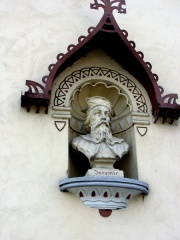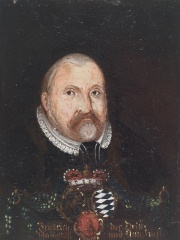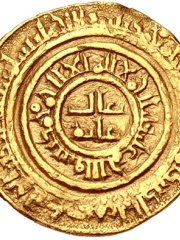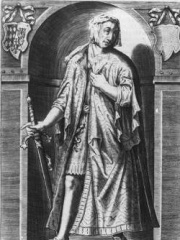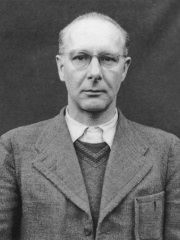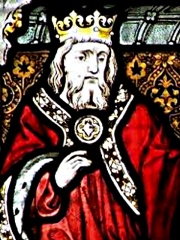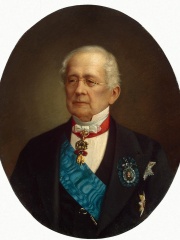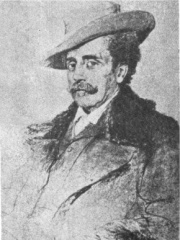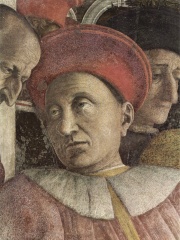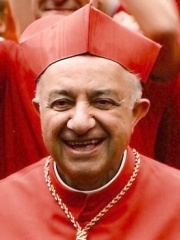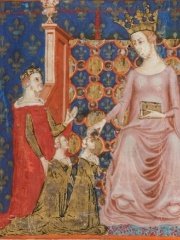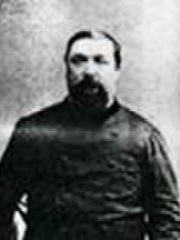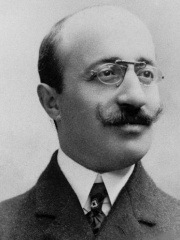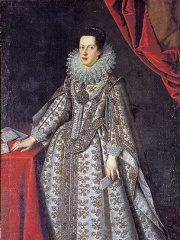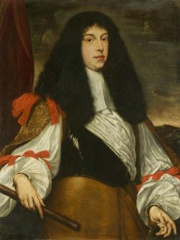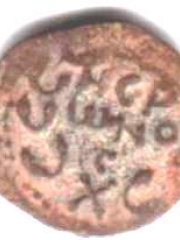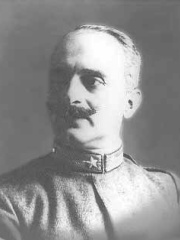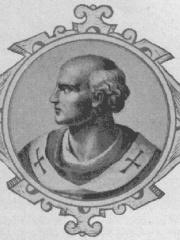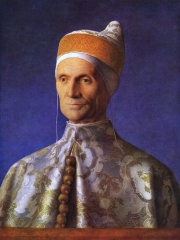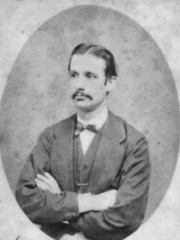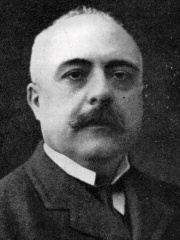POLITICIAN
Aistulf
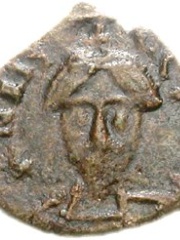
 Aistulf
Aistulf
Aistulf (also Ahistulf, Haistulfus, Astolf etc.; Latin: Aistulfus, Italian: Astolfo; died December 756) was the Duke of Friuli from 744, King of the Lombards from 749, and Duke of Spoleto from 751. His reign was characterized by ruthless and ambitious efforts to conquer Roman territory to the extent that in the Liber Pontificalis, he is described as a "shameless" Lombard given to "pernicious savagery" and cruelty. Read more on Wikipedia
His biography is available in different languages on Wikipedia. Aistulf is the 6,358th most popular politician (down from 5,392nd in 2019), the 1,684th most popular biography from Italy (down from 1,538th in 2019) and the 414th most popular Italian Politician.
Memorability Metrics
Page views of Aistulf by language
Among POLITICIANS
Among politicians, Aistulf ranks 6,358 out of 19,576. Before him are Jaromír, Duke of Bohemia, Frederick III, Elector Palatine, Al-Hafiz, Paul Masson, Çandarlı Halil Pasha the Younger, and Meinhard III, Count of Gorizia-Tyrol. After him are Santiago Carrillo, Viktor Brack, Kiichi Miyazawa, Arnulf I, Count of Flanders, Alexander Gorchakov, and Princess Marie of Baden.
Most Popular Politicians in Wikipedia
Go to all RankingsJaromír, Duke of Bohemia
1000 - 1038
HPI: 64.90
Rank: 6,354
Frederick III, Elector Palatine
1515 - 1576
HPI: 64.90
Rank: 6,355
Al-Hafiz
1074 - 1149
HPI: 64.90
Rank: 6,356
Paul Masson
1876 - 1944
HPI: 64.90
Rank: 6,357
Çandarlı Halil Pasha the Younger
1500 - 1453
HPI: 64.90
Rank: 6,358
Meinhard III, Count of Gorizia-Tyrol
1344 - 1363
HPI: 64.90
Rank: 6,359
Aistulf
HPI: 64.90
Rank: 6,360
Santiago Carrillo
1915 - 2012
HPI: 64.90
Rank: 6,361
Viktor Brack
1904 - 1948
HPI: 64.90
Rank: 6,362
Kiichi Miyazawa
1919 - 2007
HPI: 64.90
Rank: 6,363
Arnulf I, Count of Flanders
889 - 965
HPI: 64.89
Rank: 6,364
Alexander Gorchakov
1798 - 1883
HPI: 64.89
Rank: 6,365
Princess Marie of Baden
1782 - 1808
HPI: 64.89
Rank: 6,366
In Italy
Among people born in Italy, Aistulf ranks 1,684 out of 5,161. Before him are Antonio Labriola (1843), Walter Bonatti (1930), Agostino Tassi (1578), Ludovico III Gonzaga, Marquis of Mantua (1412), Giuseppe Cesari (1568), and Dionigi Tettamanzi (1934). After him are Sancia of Majorca (1285), Domenico Zipoli (1688), Pierre Napoléon Bonaparte (1815), Mary Douglas (1921), Francesco Cilea (1866), and Catherine de' Medici, Governor of Siena (1593).
Others born in Italy
Go to all RankingsAntonio Labriola
PHILOSOPHER
1843 - 1904
HPI: 64.94
Rank: 1,678
Walter Bonatti
MOUNTAINEER
1930 - 2011
HPI: 64.93
Rank: 1,679
Agostino Tassi
PAINTER
1578 - 1644
HPI: 64.92
Rank: 1,680
Ludovico III Gonzaga, Marquis of Mantua
POLITICIAN
1412 - 1478
HPI: 64.92
Rank: 1,681
Giuseppe Cesari
PAINTER
1568 - 1640
HPI: 64.91
Rank: 1,682
Dionigi Tettamanzi
RELIGIOUS FIGURE
1934 - 2017
HPI: 64.90
Rank: 1,683
Aistulf
POLITICIAN
HPI: 64.90
Rank: 1,684
Sancia of Majorca
COMPANION
1285 - 1345
HPI: 64.89
Rank: 1,685
Domenico Zipoli
COMPOSER
1688 - 1726
HPI: 64.89
Rank: 1,686
Pierre Napoléon Bonaparte
POLITICIAN
1815 - 1881
HPI: 64.89
Rank: 1,687
Mary Douglas
ANTHROPOLOGIST
1921 - 2007
HPI: 64.89
Rank: 1,688
Francesco Cilea
COMPOSER
1866 - 1950
HPI: 64.89
Rank: 1,689
Catherine de' Medici, Governor of Siena
COMPANION
1593 - 1629
HPI: 64.87
Rank: 1,690
Among POLITICIANS In Italy
Among politicians born in Italy, Aistulf ranks 414. Before him are Theophylact I, Count of Tusculum (860), Claudia de' Medici (1604), Alfonso IV d'Este, Duke of Modena (1634), Porcius Festus (null), Leonardo Sciascia (1921), and Ludovico III Gonzaga, Marquis of Mantua (1412). After him are Pierre Napoléon Bonaparte (1815), Giulio Douhet (1869), Antipope Benedict X (1048), Leonardo Loredan (1436), Prince Alfonso, Count of Caserta (1841), and Antonio Salandra (1853).
Theophylact I, Count of Tusculum
860 - 920
HPI: 65.02
Rank: 408
Claudia de' Medici
1604 - 1648
HPI: 65.00
Rank: 409
Alfonso IV d'Este, Duke of Modena
1634 - 1662
HPI: 64.99
Rank: 410
Porcius Festus
HPI: 64.98
Rank: 411
Leonardo Sciascia
1921 - 1989
HPI: 64.95
Rank: 412
Ludovico III Gonzaga, Marquis of Mantua
1412 - 1478
HPI: 64.92
Rank: 413
Aistulf
HPI: 64.90
Rank: 414
Pierre Napoléon Bonaparte
1815 - 1881
HPI: 64.89
Rank: 415
Giulio Douhet
1869 - 1930
HPI: 64.86
Rank: 416
Antipope Benedict X
1048 - 1074
HPI: 64.84
Rank: 417
Leonardo Loredan
1436 - 1521
HPI: 64.84
Rank: 418
Prince Alfonso, Count of Caserta
1841 - 1934
HPI: 64.80
Rank: 419
Antonio Salandra
1853 - 1931
HPI: 64.79
Rank: 420
